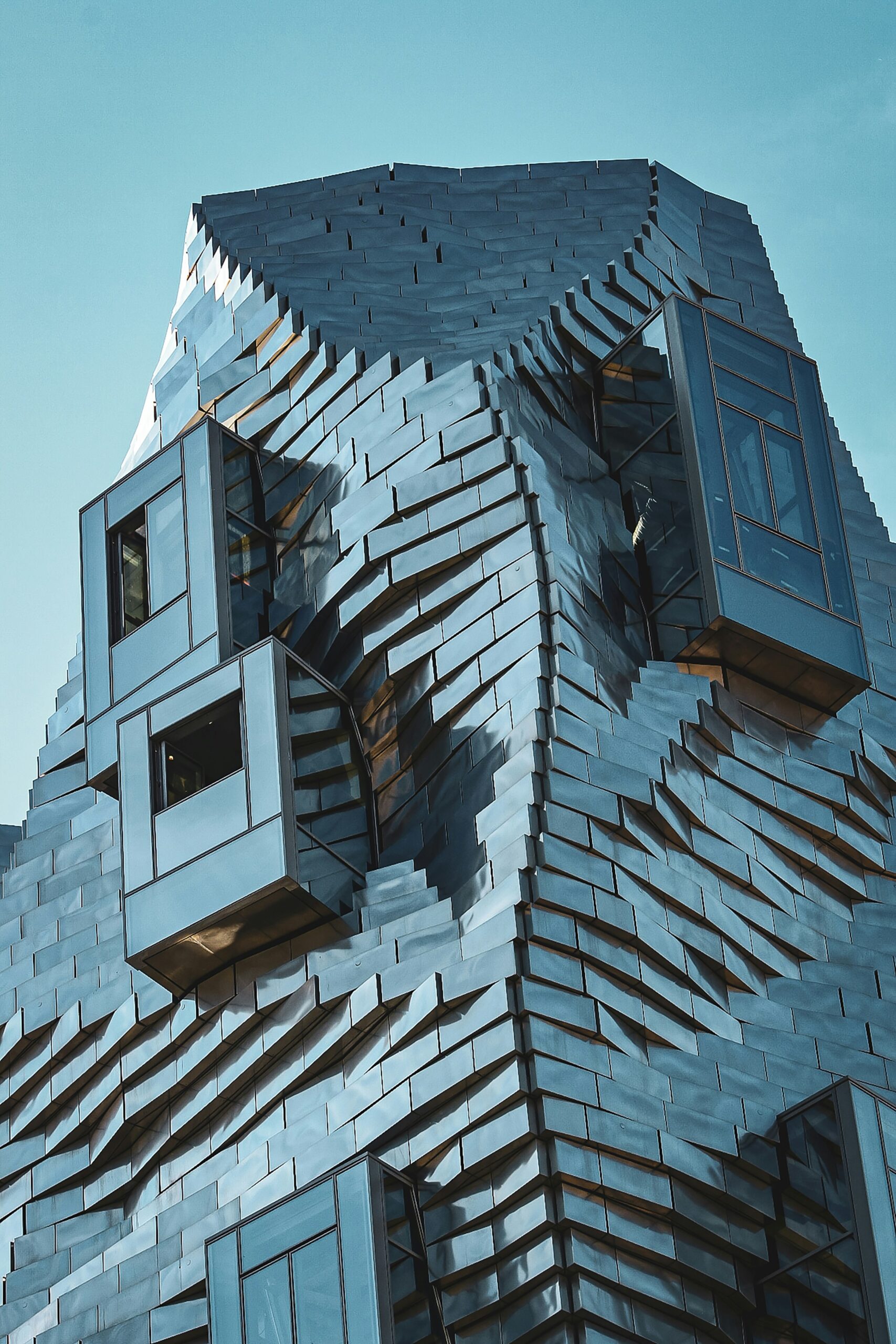
Simply mentioning his name brings to mind iconic modern structures featuring unmistakable futurist designs: Frank Gehry stands as a legend in the architectural realm. His creations—both past and present—are notable for their distinct character and consistent ability to awe spectators.
Only a select few architects possess such global recognition that simply mentioning their names evokes vivid mental pictures of groundbreaking design. Among these luminaries, Frank Gehry stands out unequivocally. An innovator who consistently pushes boundaries, he has been presenting forward-thinking projects for more than six decades. His work underscores that while architecture is indeed a serious field, it can also embrace whimsy and creativity without losing its gravitas.
Who is Frank Gehry, the designer?
Frank Gehry, born in Toronto in 1929, was an American-Canadian architect who started studying architecture in Los Angeles in 1947. He embarked on his professional journey with several companies initially handling residential and commercial designs. By the 1960s, he launched his own architectural practice which later became renowned as Gehry Partners LLP, focusing increasingly on large-scale projects over time.
His career took a pivotal turn in 1978 with the renovation of his personal residence, known as the Gehry Residence in Santa Monica. Frank Gehry opted for industrial materials like plywood, metal, and corrugated steel for this undertaking. This project is frequently considered an architectural manifesto by him.
In 1989, he received the esteemed award Pritzker Prize - akin to a Nobel Prize for architects - and proceeded to secure various accolades throughout his career for his contributions to modern architecture.
Beyond his remarkable contributions to architecture, Frank Gehry is deeply committed to education and has shared his knowledge as an instructor at various renowned institutions such as Yale University and UCLA.

What characterizes the architectural approach of Frank Gehry?
An innovative architect renowned for his unorthodox architectural style, marked by irregular shapes, non-traditional materials, and a preference for sculptural structures, Frank Gehry’s designs are frequently labeled as deconstructivist.
His designs are distinguished by their smooth contours, flowing surfaces, and daring application of reflective elements like titanium, stainless steel, and glass. He envisioned these structures as complete works of art that can be lived in, seamlessly blending with the natural surroundings and reflecting the values of the surrounding community.
Five must-see masterworks by Frank Gehry that you should explore
The Guggenheim Museum Bilbao in Spain
Launched in 1997, this museum of modern art, featuring its flowing shapes and striking materials, has dramatically reshaped the landscape. Bilbao 's image and has even single-handedly boosted the city's economy - a phenomenon that since come to be known as the “Bilbao effect” or the “Guggenheim effect.”
Guggenheim Museum Bilbao
Abandoibarra Etorb., 2, Abando,
48009 Bilbao, Bizkaia, Spain
+34 944 35 90 80
guggenheim-bilbao.eus/en
The Walt Disney Concert Hall in Los Angeles
The structure, inaugurated in 2003, serves as the residence for the Los Angeles Philharmonic Orchestra. Featuring a facade made of stainless steel and an impeccably designed acoustic interior, it stands out as a testament to Frank Gehry's remarkable architectural skills.
Walt Disney Concert Hall
111 S Grand Ave
Los Angeles, California 90012, USA
+1 323-850-2000
laphil.com/about/our-venues/about-the-walt-disney-concert-hall
The Louis Vuitton Foundation in Paris
Like a ship moored incongruously in the middle of the Bois de Boulogne, the Fondation Louis Vuitton Captivates us with its contemporary, lyrical design. Completed in 2014, this edifice consists of twelve glass sails held aloft by a steel skeleton, hovering over the primary structure. It is a sight to behold.
Fondation Louis Vuitton
8 Avenue du Mahatma Gandhi
75116 Paris
+33 (0) 1 40 69 96 00
fondationlouisvuitton.fr/en
The Museum of Popular Culture (MoPOP) located in Seattle, Washington
Known as the Experience Music Project | Science Fiction Museum (EMP|SFM) Until 2016, the Museum of Pop Culture (MoPOP) was renowned for its vibrant, irregular design featuring striking curved forms that evoke a disassembled electric guitar.
Museum of Pop Culture
325 5th Ave N
Seattle, Washington 98109, United States
+1 206-770-2700
mopop.org/
The Dance House in Prague
Created in partnership with Czech architect Vlado Milunić, the design was developed. Dancing House has turned into a symbolic structure in Prague , readily identifiable due to its undulating, meandering profile, which appears to depict a couple of dancers. Actually, Frank Gehry initially referred to it as Ginger and Fred with regard to the well-known number 20 th dancers from the century Fred Astaire and Ginger Rogers.
Dancing House
Jiráskovo nám. 1981/6
120 00 Nové Mě sto, Czech Republic

Our website uses cookies to improve your experience. Learn more